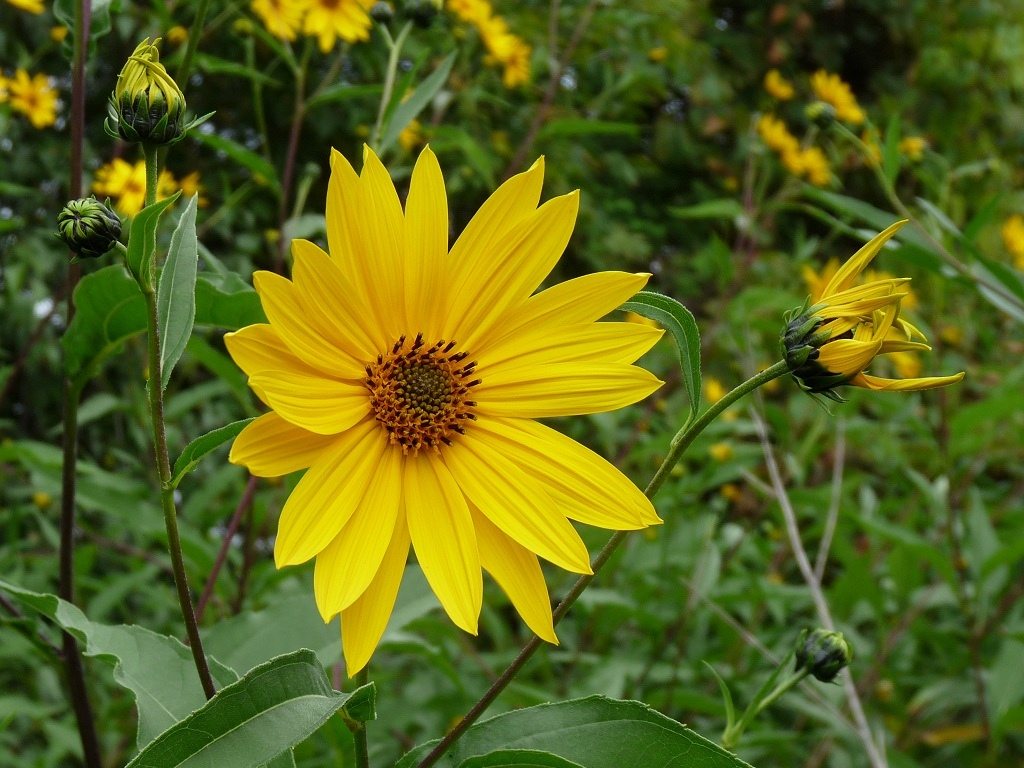Opening this series of ingredients is the disfigured but delicious Jerusalem artichoke, a tuber that gives credence to the old adage that you shouldn’t judge a book by its cover. The Jerusalem artichoke originated in North America where it is more commonly known as the sunchoke. It was introduced to France in the 17th century by Samuel de Champlain, and as such Europe became a major cultivator of it. Its appearance above terra firma is in the form of a sunflower (Helianthus tuberosus) whereas it’s subterranean form resembles gnarly ginger, with a plump look and non-fibrous texture.
The Jerusalem artichoke itself is not related to the globe artichoke in any way, shape or form. The artichoke part of the name was adopted, some say, due to the similarity in flavour with the globe artichoke. For those of you that have never tried a Jerusalem artichoke it can be imagined, as does Niki Segnit in The Flavour Thesaurus, as a cross between a globe artichoke and a good quality potato.
I was given some artichoke bulbs (tubers) by a mate last summer – I often find it quite amusing thinking about two hefty blokes sat in the corner of a pub supping ale, hotly debating the latest goings on in the English Premier league whilst also finding time to share recipes, dried legumes, herbaceous growing tips and Jerusalem artichoke tubers.
Anyway, after being given strict growing instructions I planted the tubers and waited for winter. During summer we went away to Vietnam for 5 weeks, and on return the plants had gone from 2 inch high nippers to 2 foot toddlers. As autumn passed the plants passed through their teenage years; a little unwieldy, requiring a little bit of propping up and producing non-descriptive buds that I was just hoping would blossom into something worthy of their potential. By winter they had; in to stunning miniature sunflowers on 6 foot stalks. They sat tall and majestic in the garden, and watched on as all around were succumbing to the autumnal drop.
Alas, eventually the flowers began to wilt, and then they passed from this mortal coil, and although the garden had lost its vibrancy what was waiting beneath the earth would more than compensate – a cornucopia of Jerusalem artichokes. From the four tubers that I planted I yielded about 3 kg of artichoke. One great little tip I was given was when the flowers had died to cut the plant down to about 1 foot in height and leave the artichokes in the ground until I wanted to use them – this worked a treat as the earth preserved. We don’t have severe winters here in Melbourne so there was no risk of frost damage. Once the artichokes had been dug up they started to deteriorate after a couple of days.
Another little tip: save some of the tubers that you dig up as they can be planted the following summer and nature’s process can begin again.
Jerusalem artichokes can be prepared in a range of ways: steamed, boiled or braised with butter.They go really well in salads, for example grilled artichoke, red onion and olive is a belting combination, or they can be fried in batter, souffléed or puréed. In fact here’s an opportunity – check out this great Jerusalem artichoke purée that I made (coming soon).
Now something to be aware of: these knobbly wonders do have a little, let’s say griping, side effect. There’s this little polymer know as inulin, which acts as an energy store and a brilliant antifreeze for these tubers. However, when inulin enters the human body it passes through the digestive system because it cannot be digested, and heads straight for the large intestine – and here it guffaws in the most satisfying of manners. You see it decides to feed the bacteria in our intestine, the same bacteria which then produces gas, and the rest they say is history. So, when serving these delicious treats at a dinner party – caveat emptor.
Here’s a quote from the 17th century botanist John Goodyer and his take on the Jerusalem artichoke,
which way soever they be dressed and eaten, they stir and cause a filthy loathsome stinking wind within the body, thereby causing the belly to be pained and tormented, and are a meat more fit for swine than men.
Maybe Mr Goodyer was a little over zealous with his love for the Jerusalem artichoke. If one can see beyond the mere trifle of a little wind, then I would recommend these wonderfully tasty and versatile vegetables. And look, if the conversation becomes stagnant at the dinner party then there’s always the possibility of your guests degenerating in to a blustery parody of the Grimethorpe Colliery brass band.




